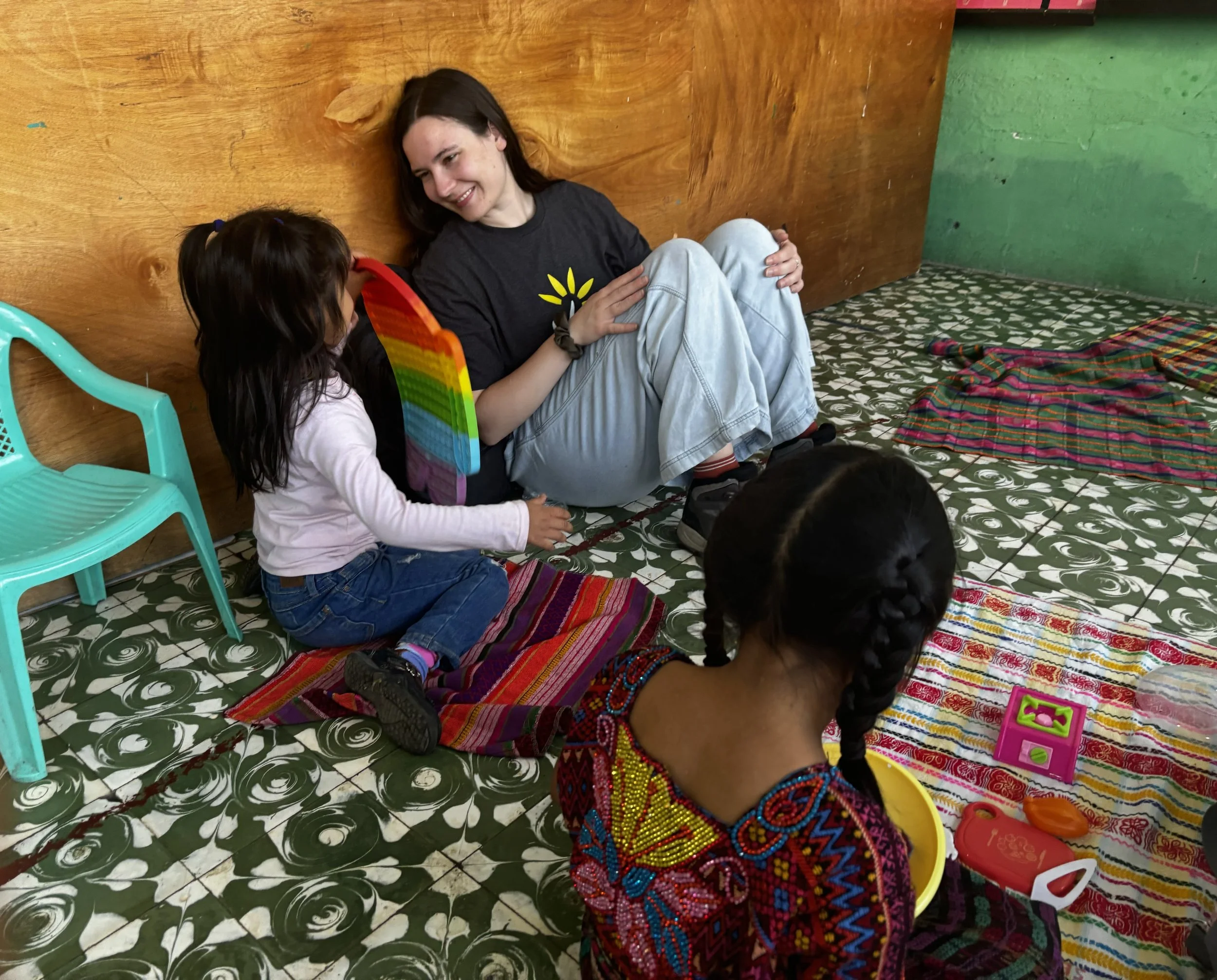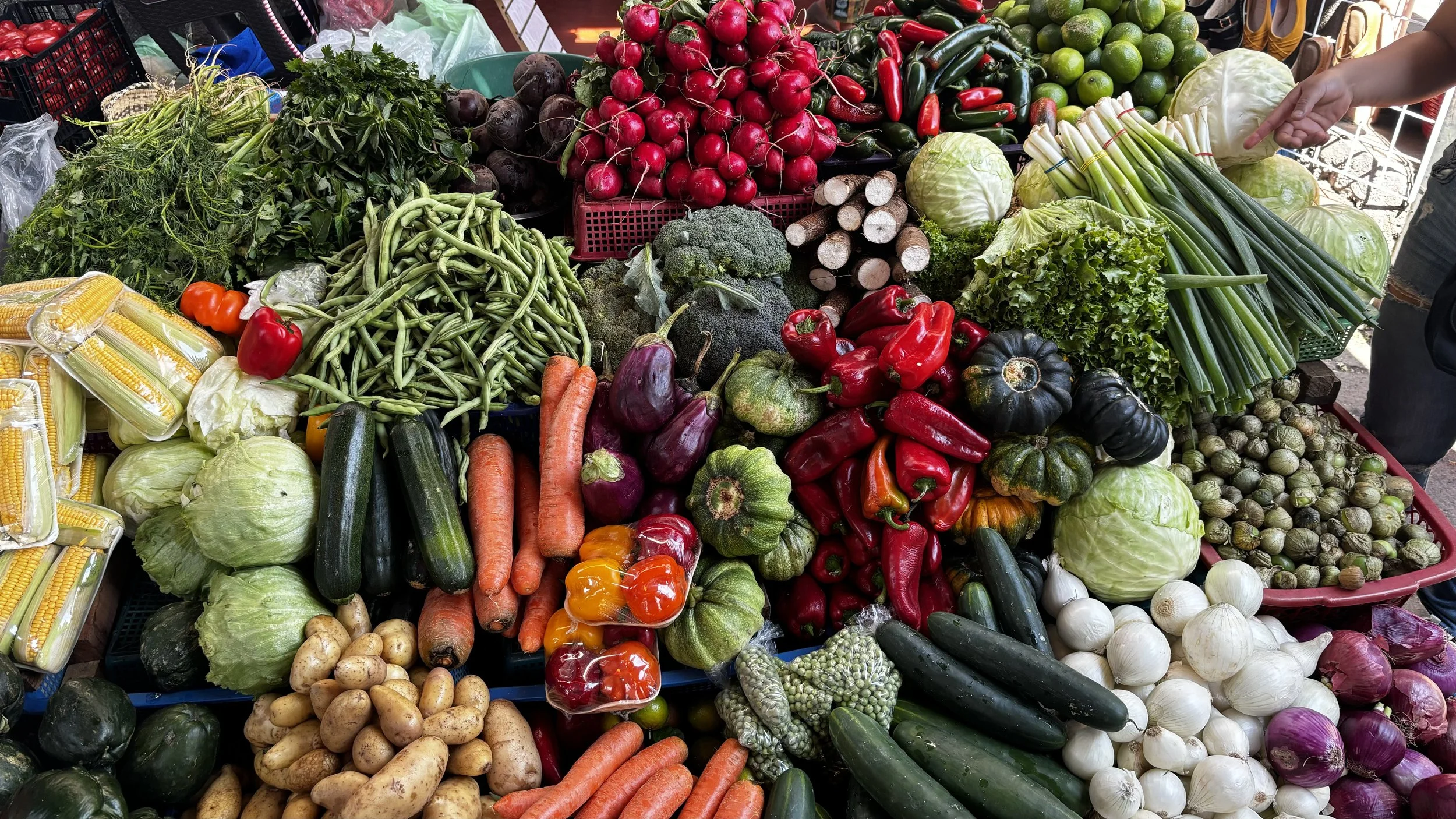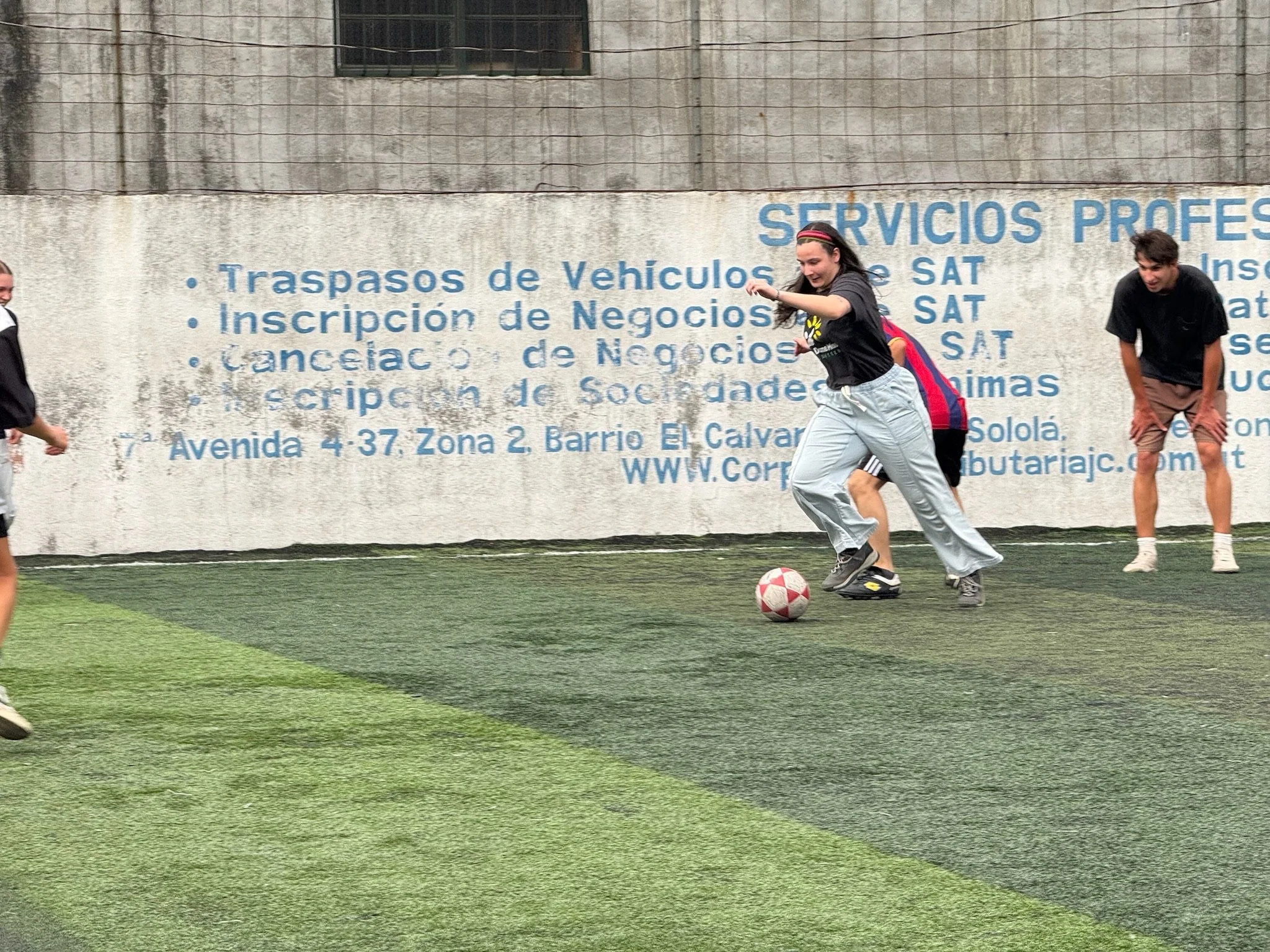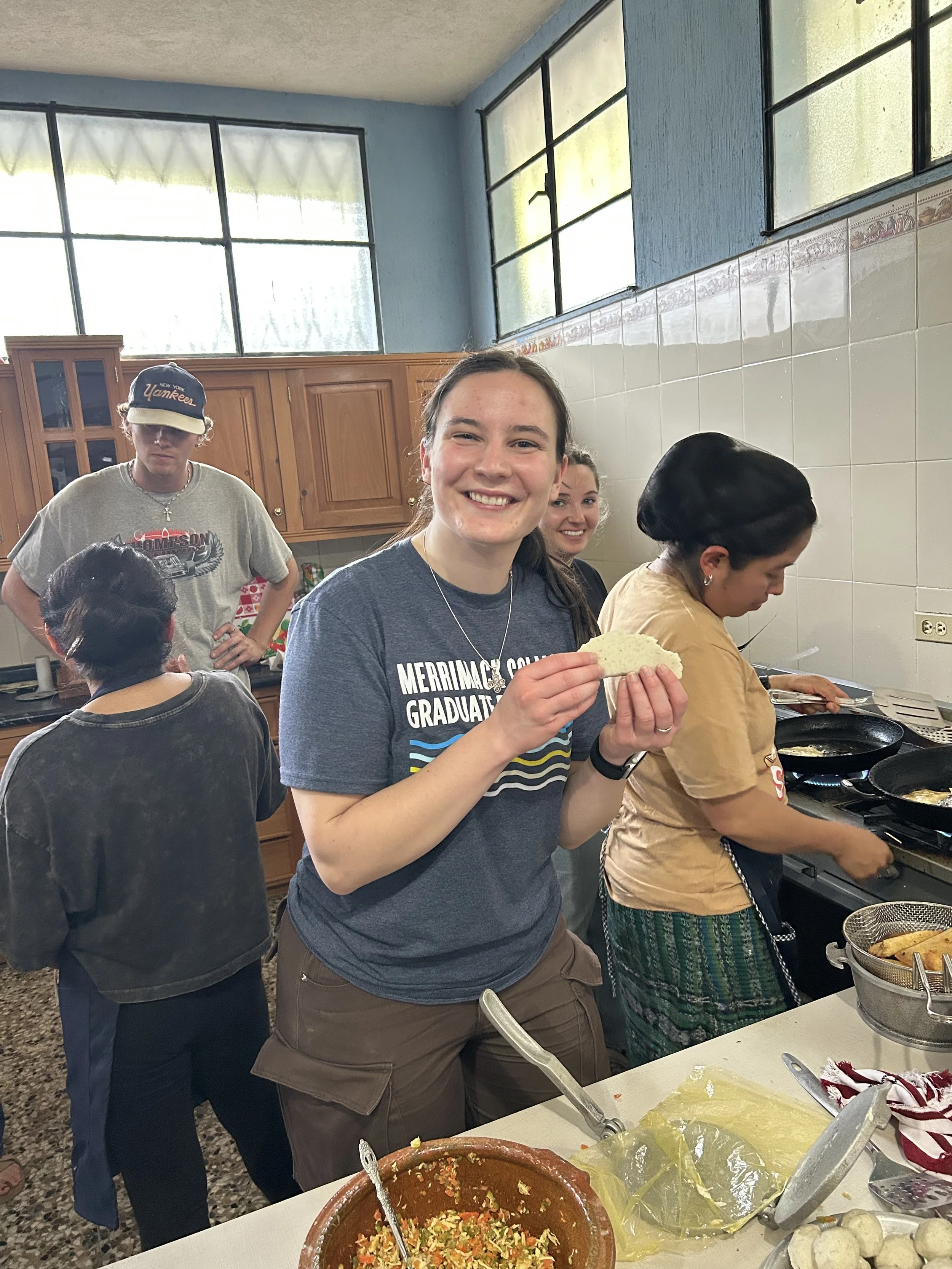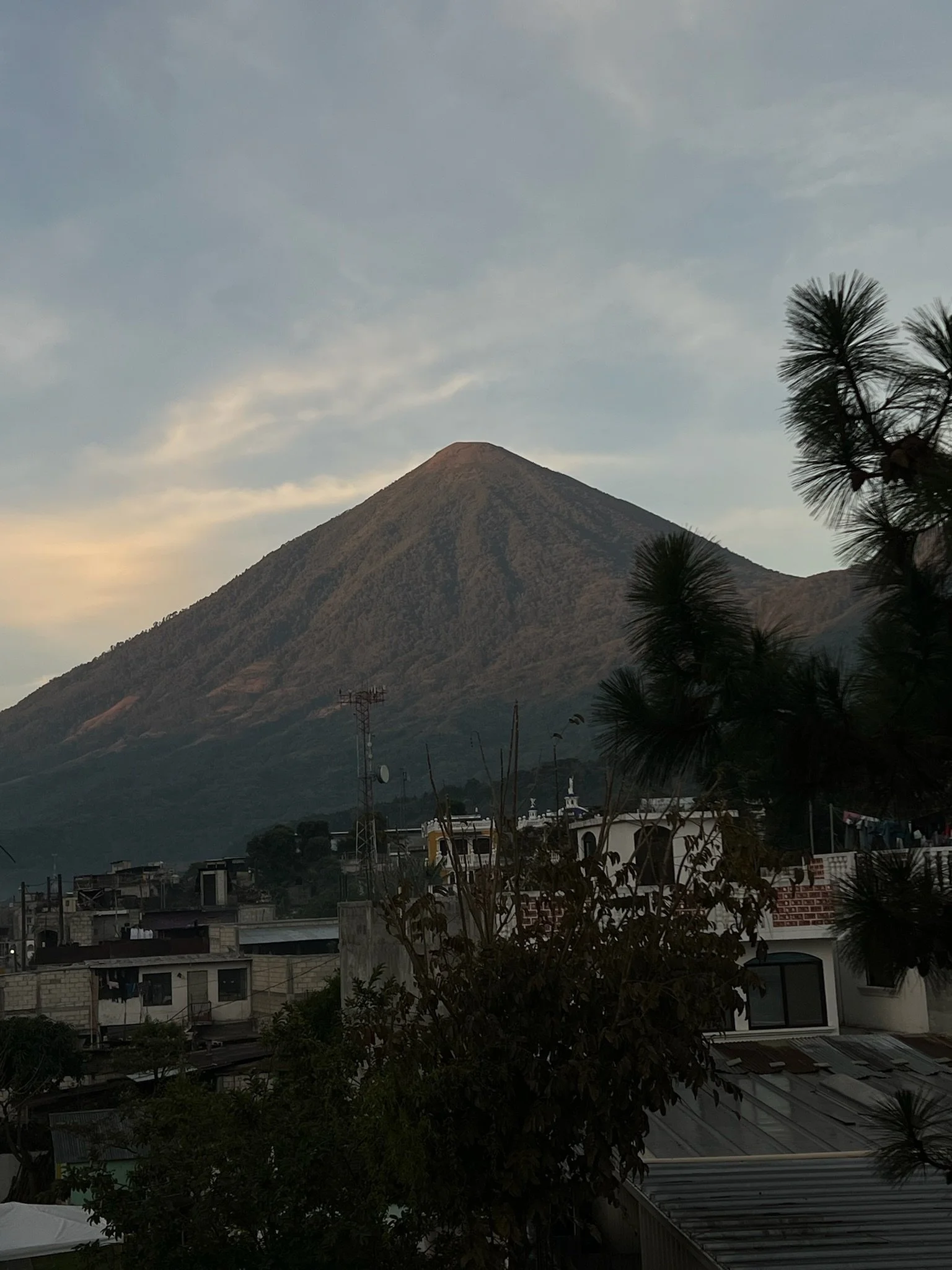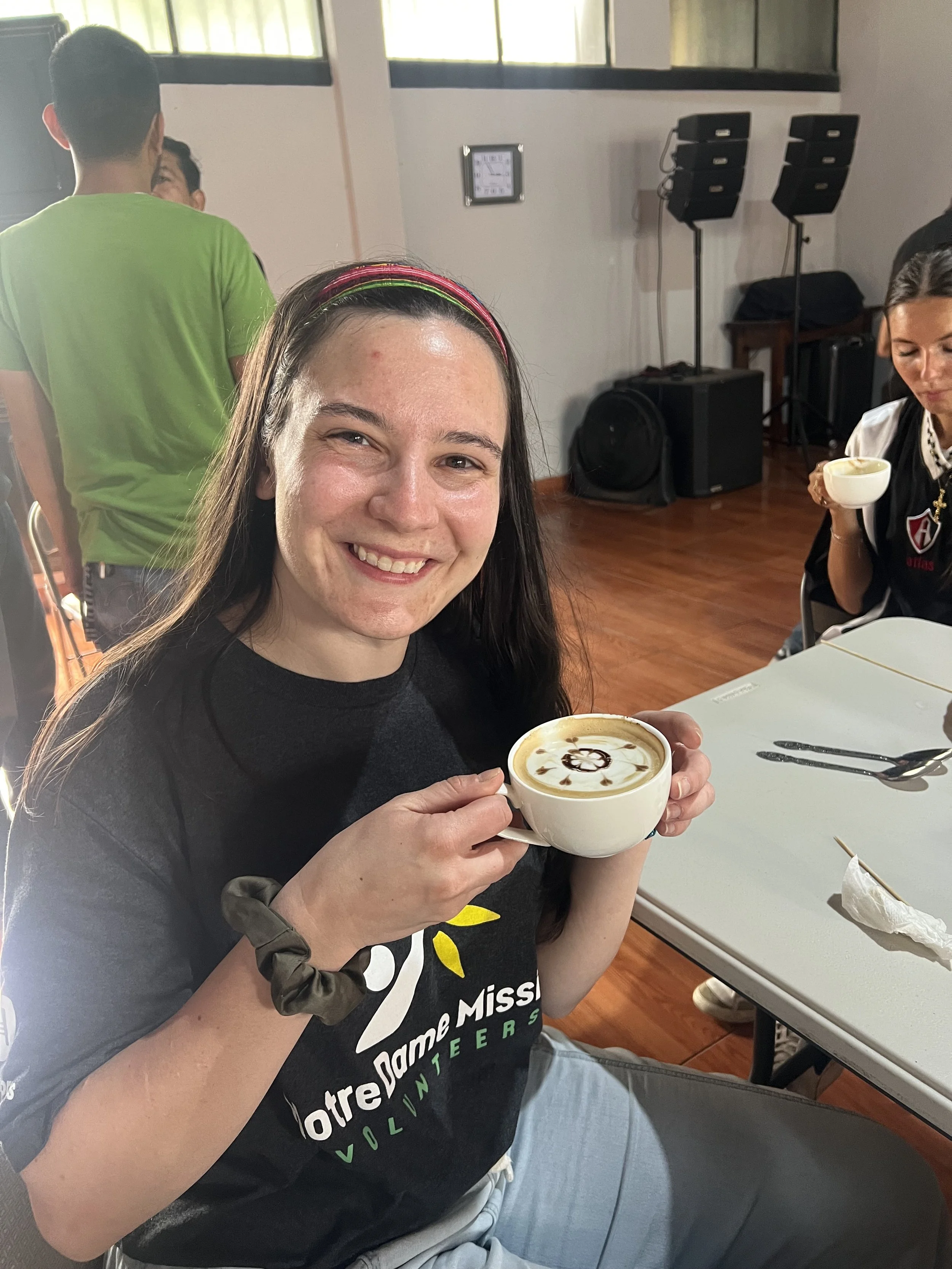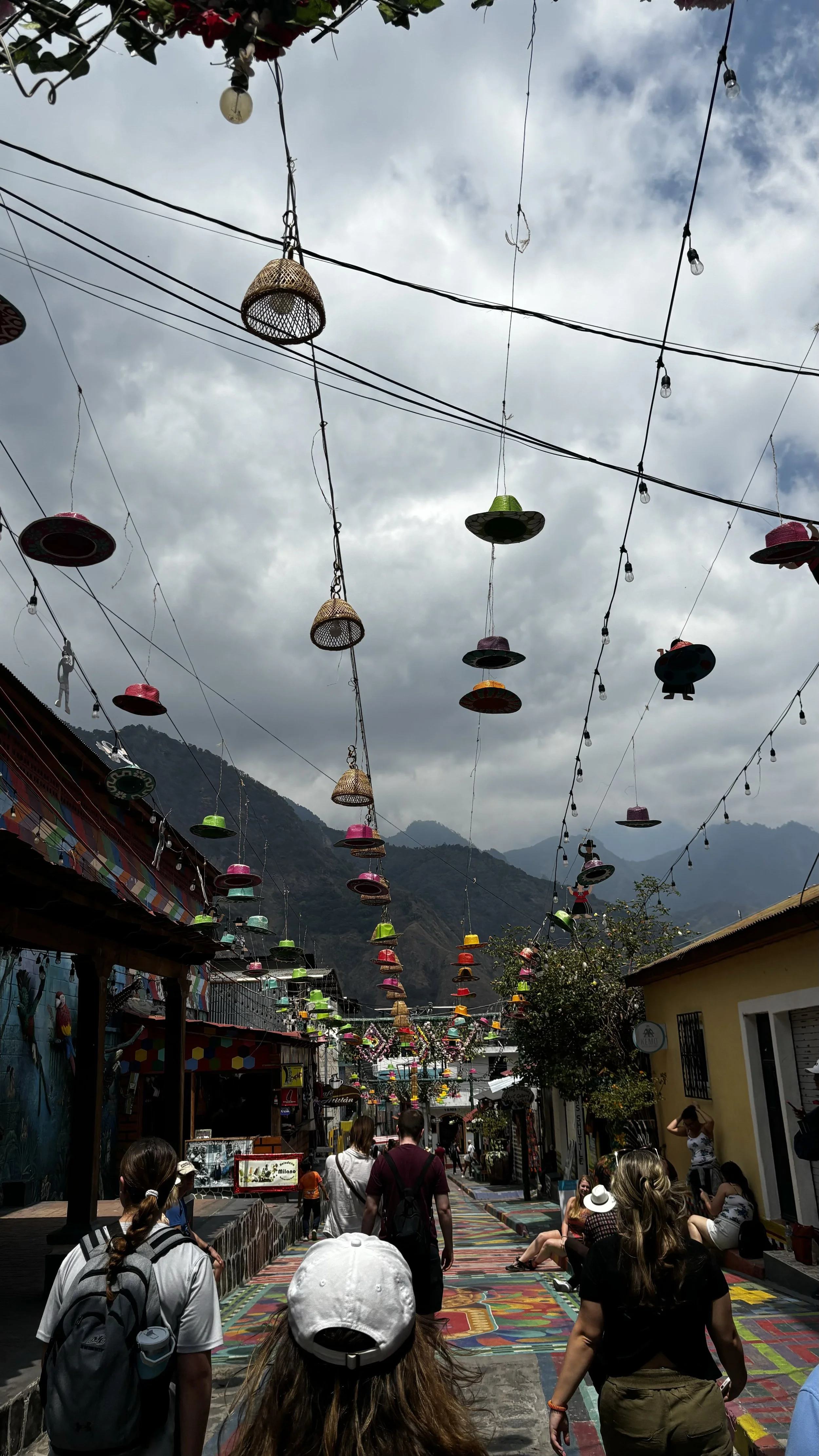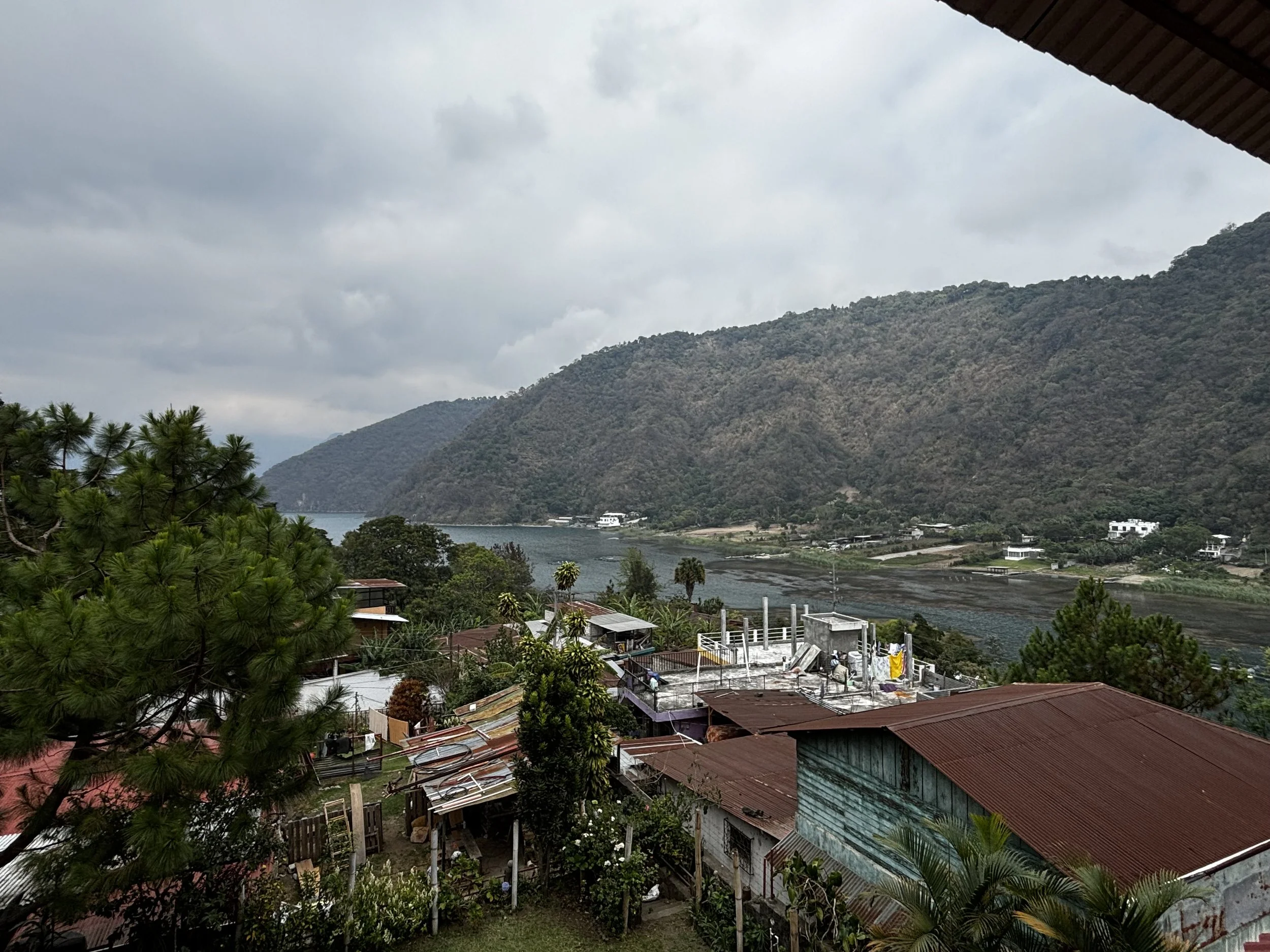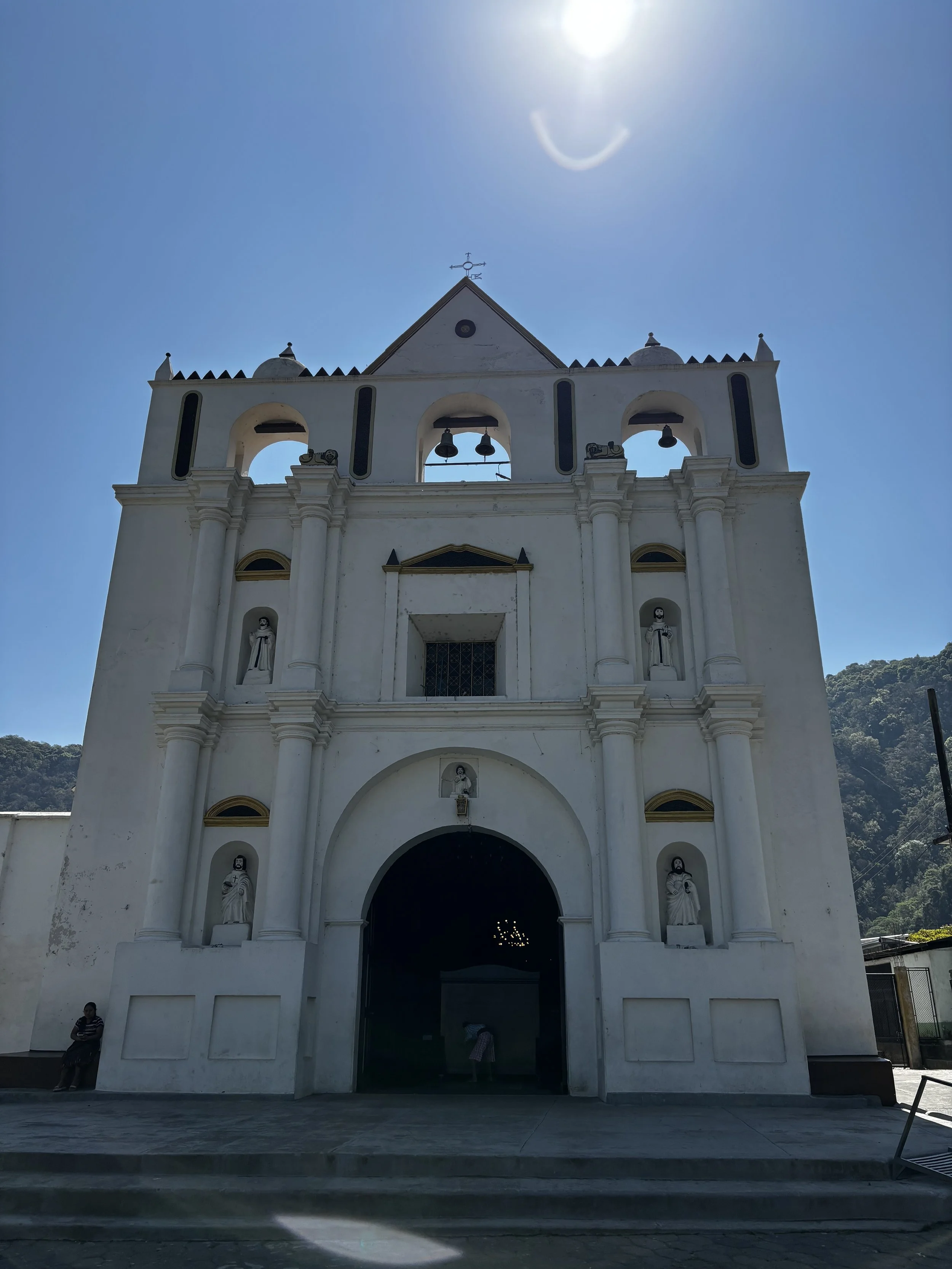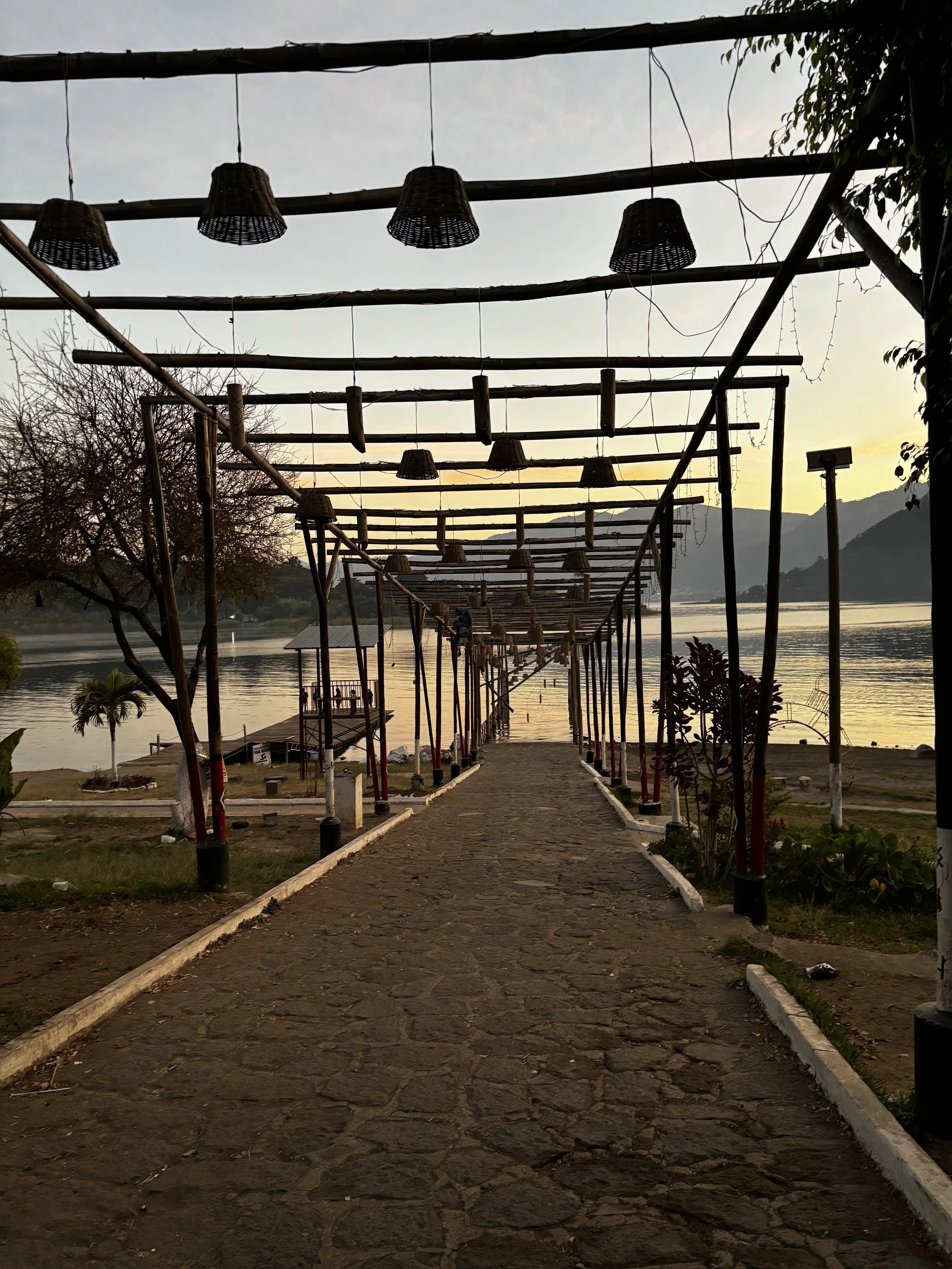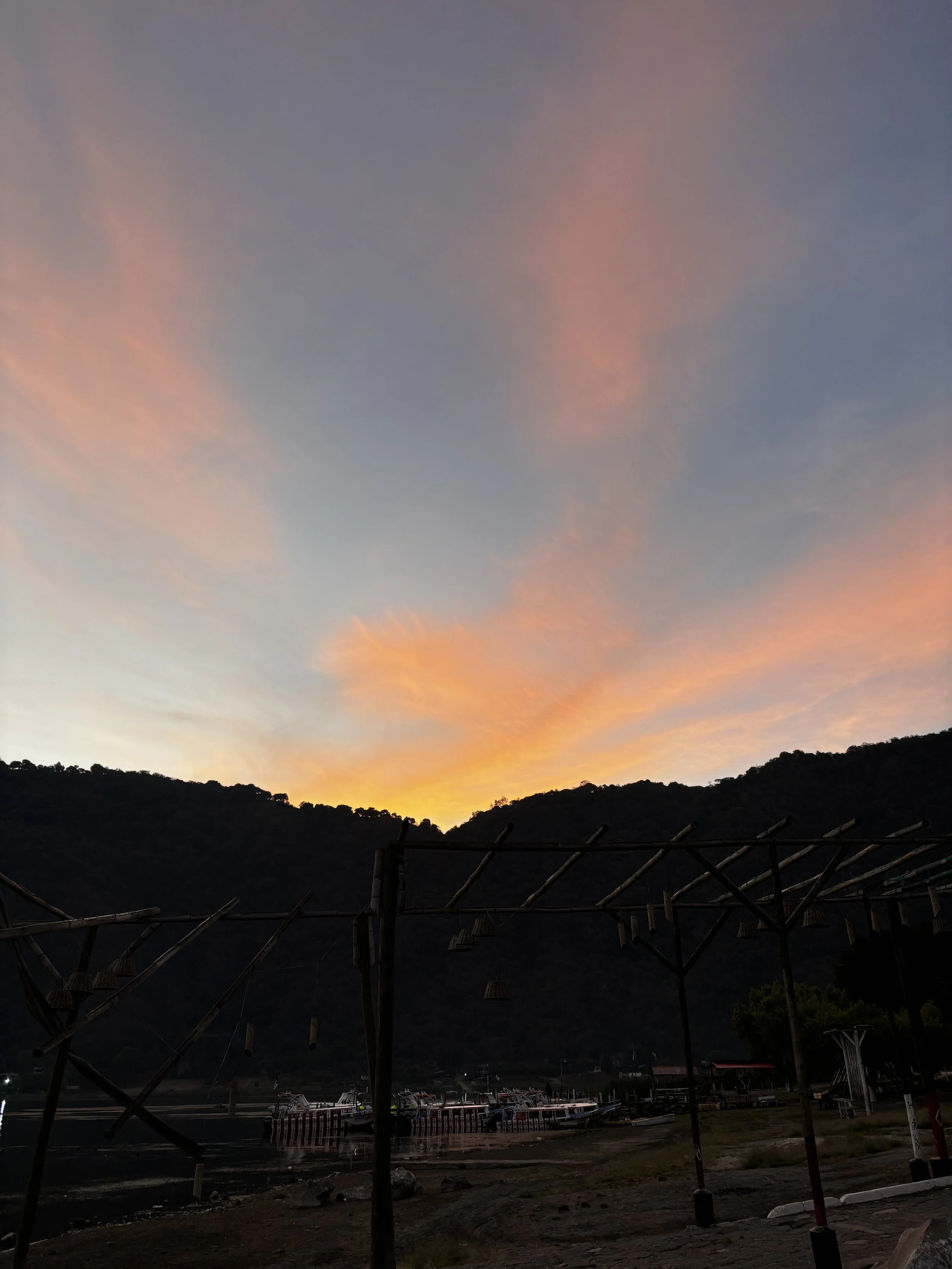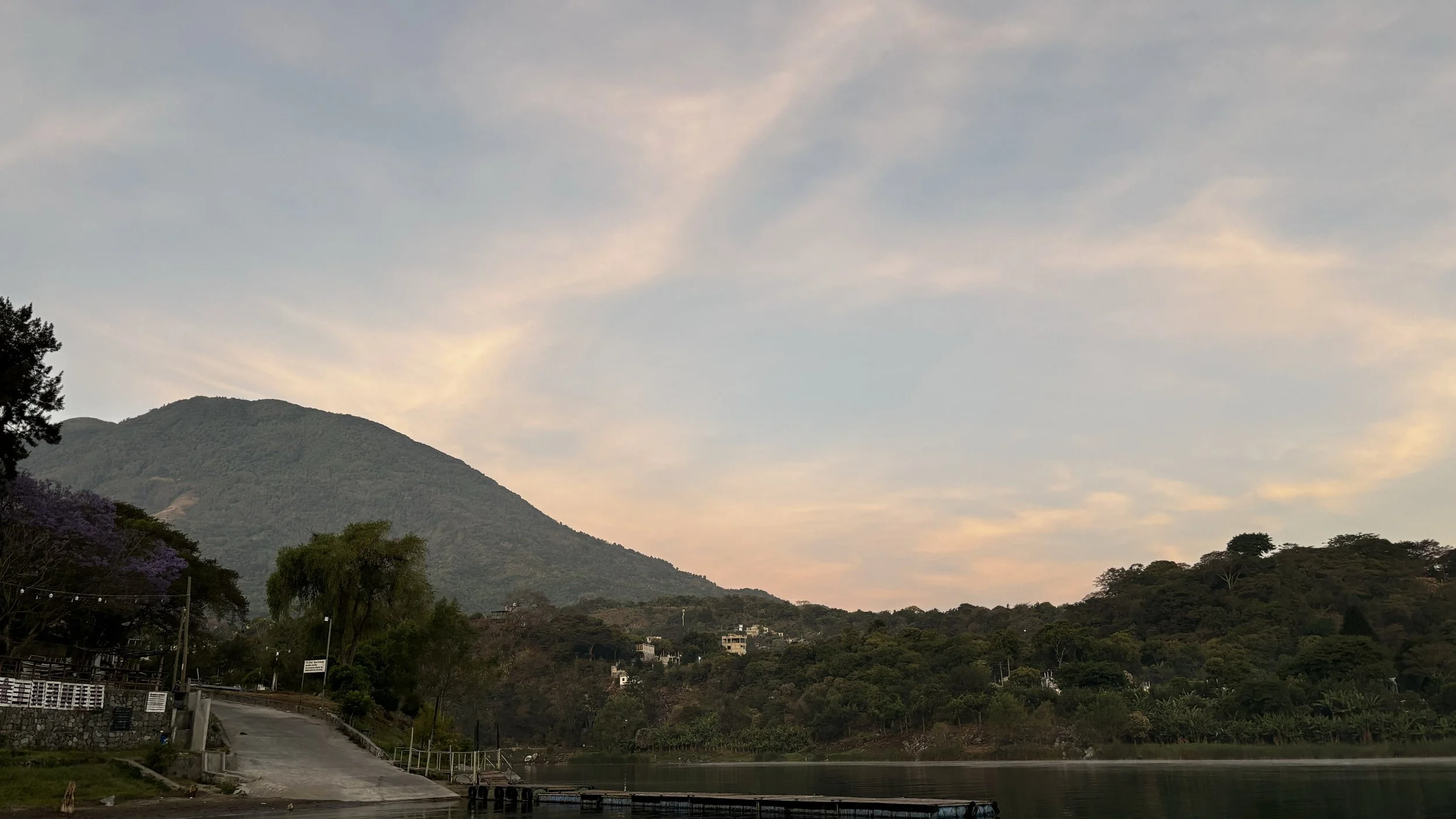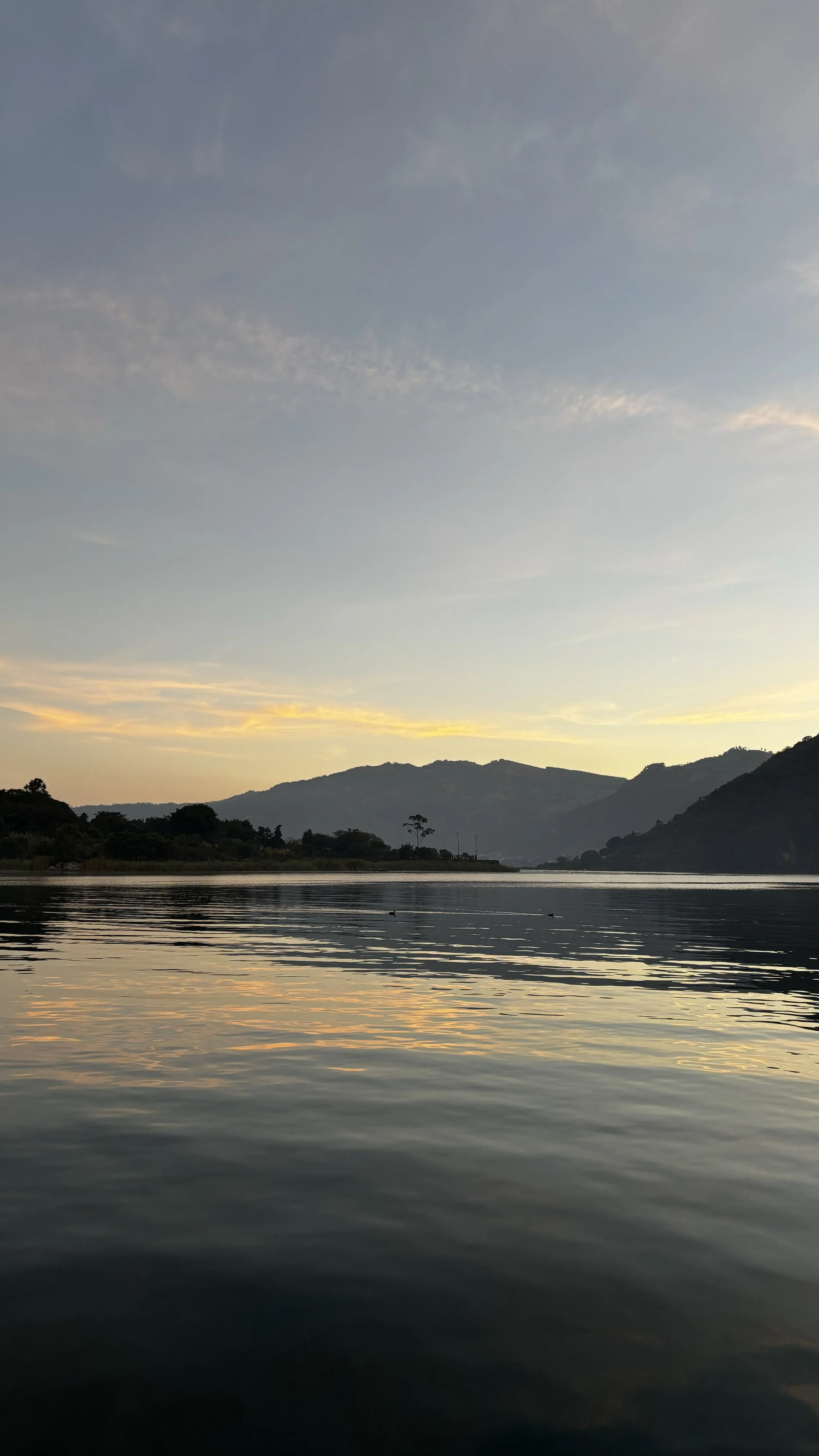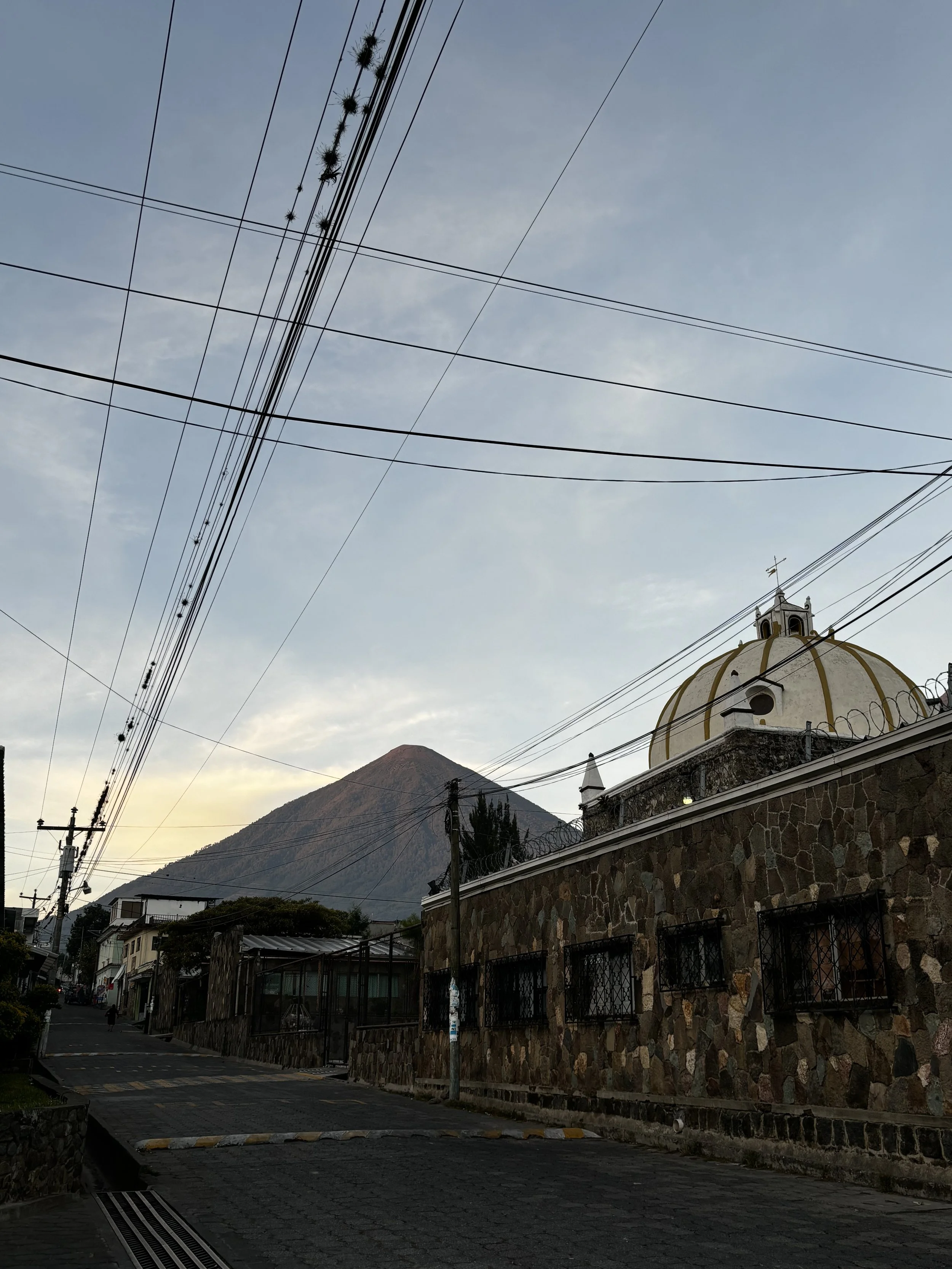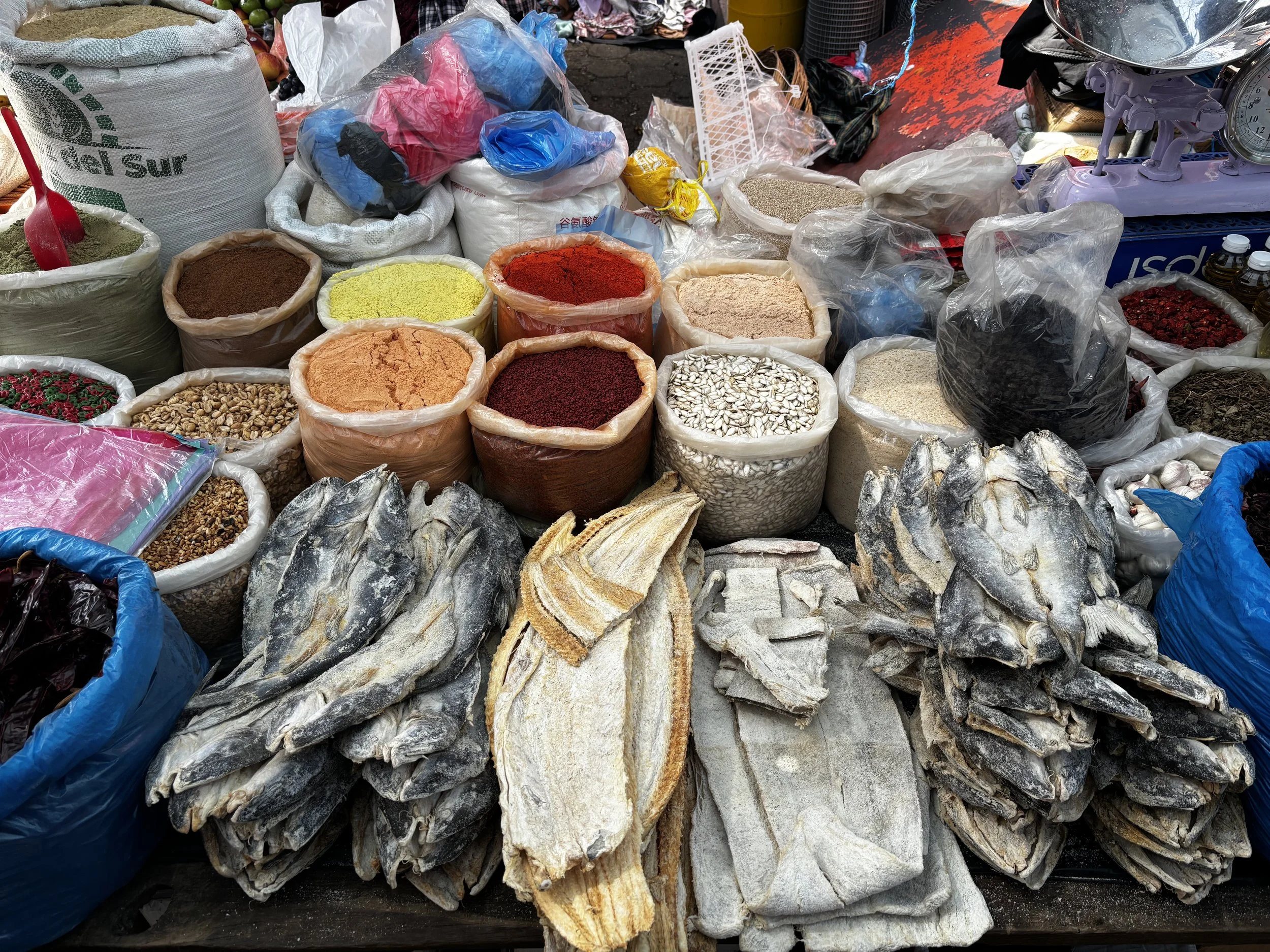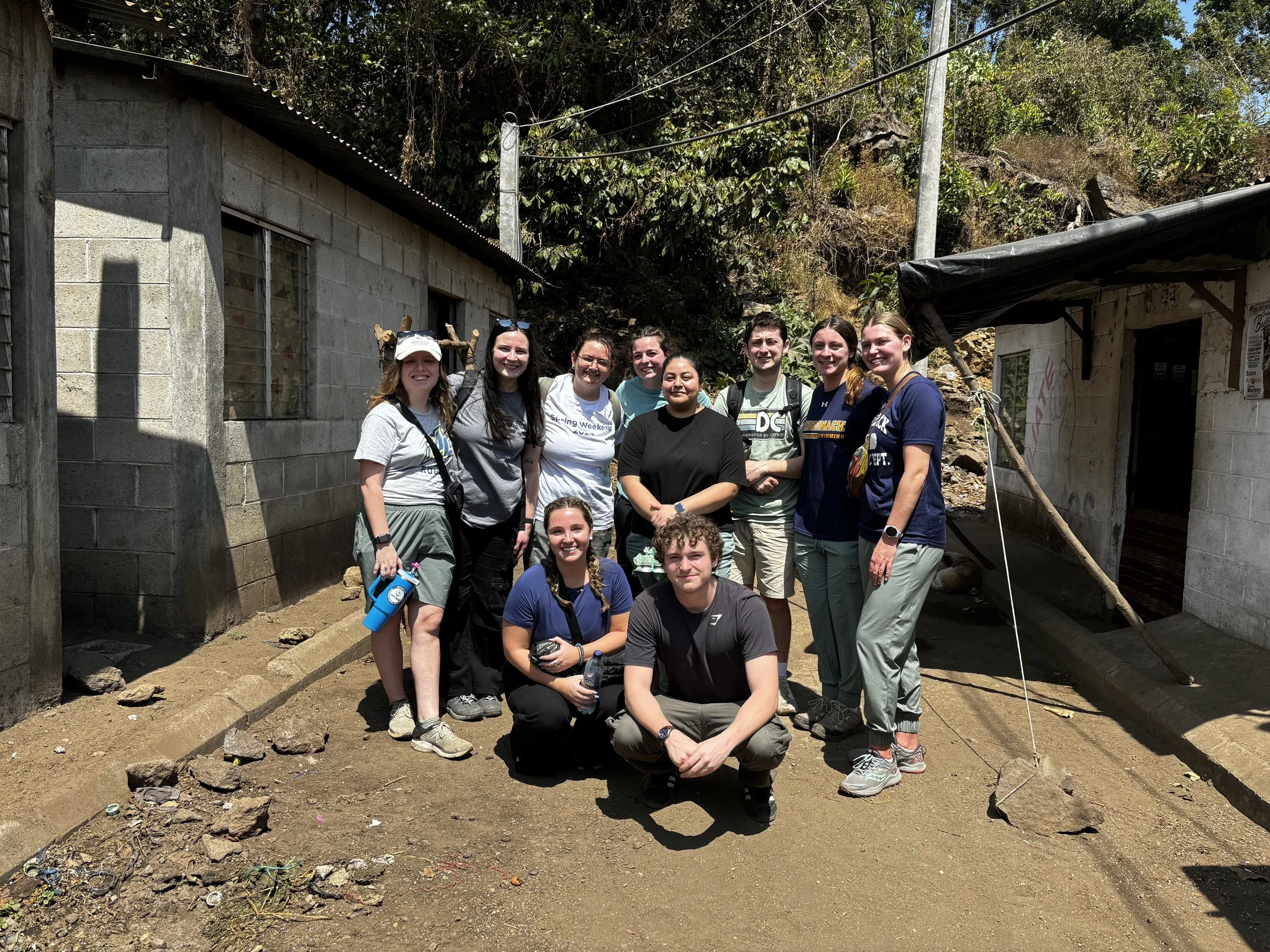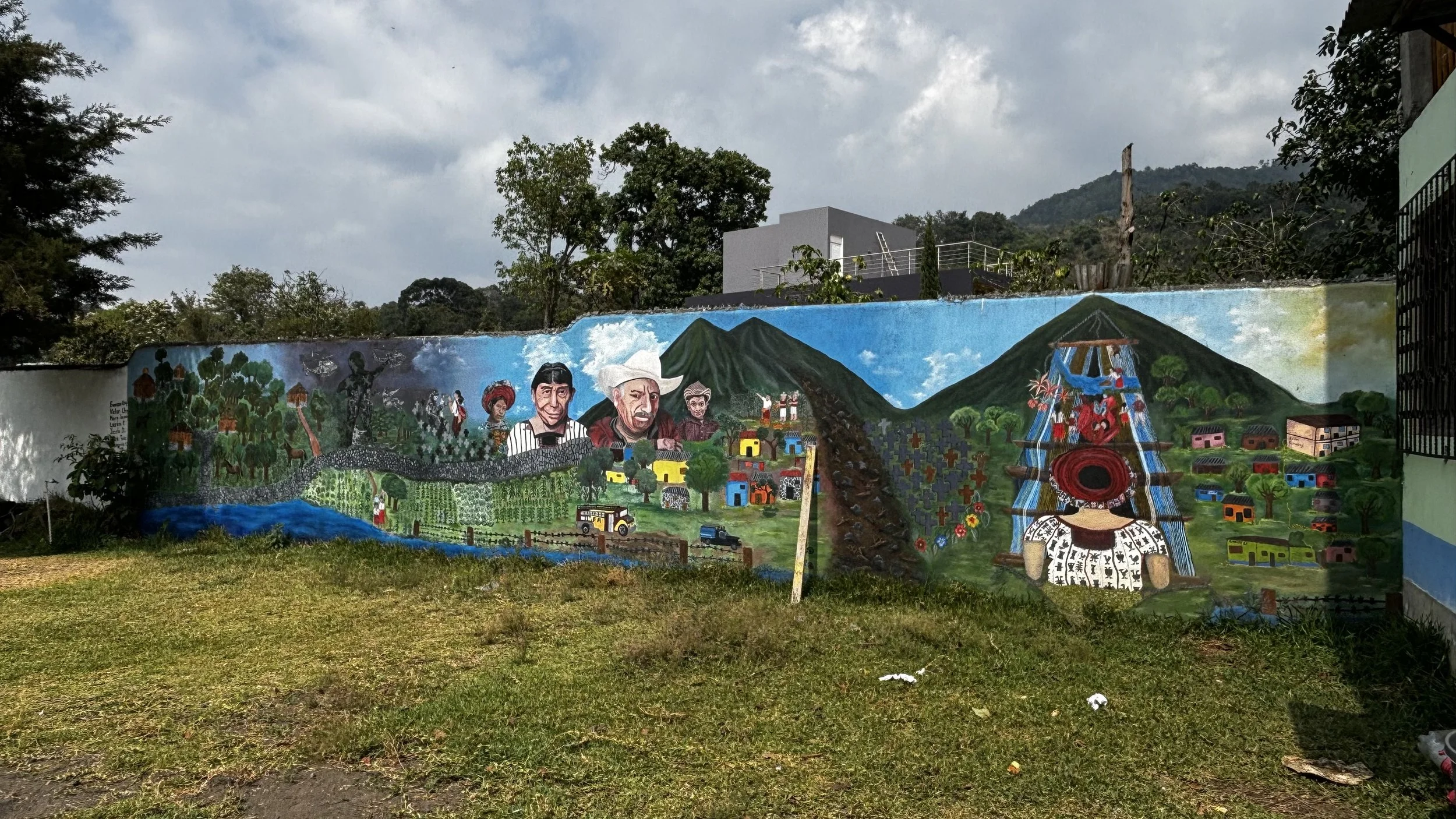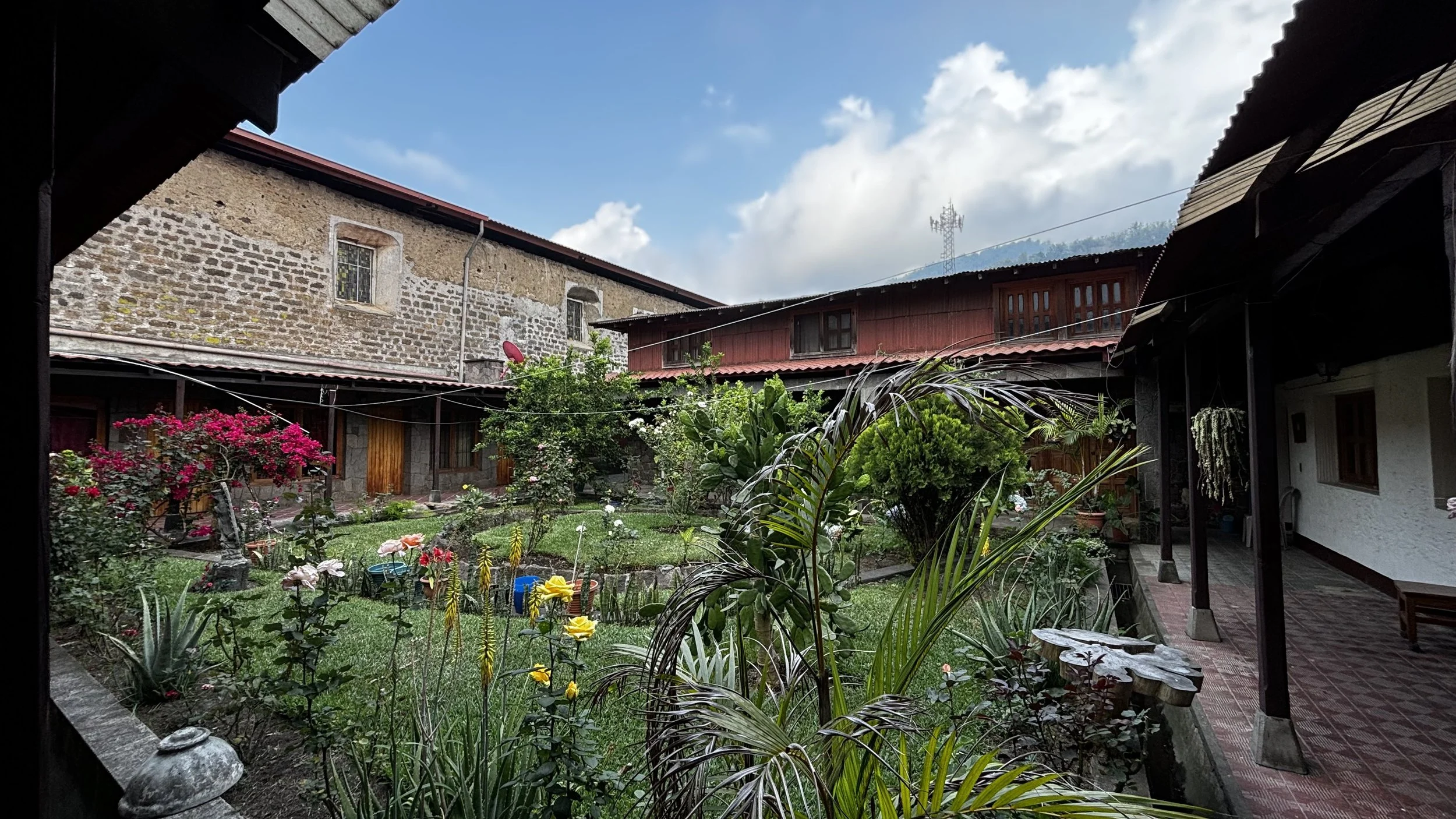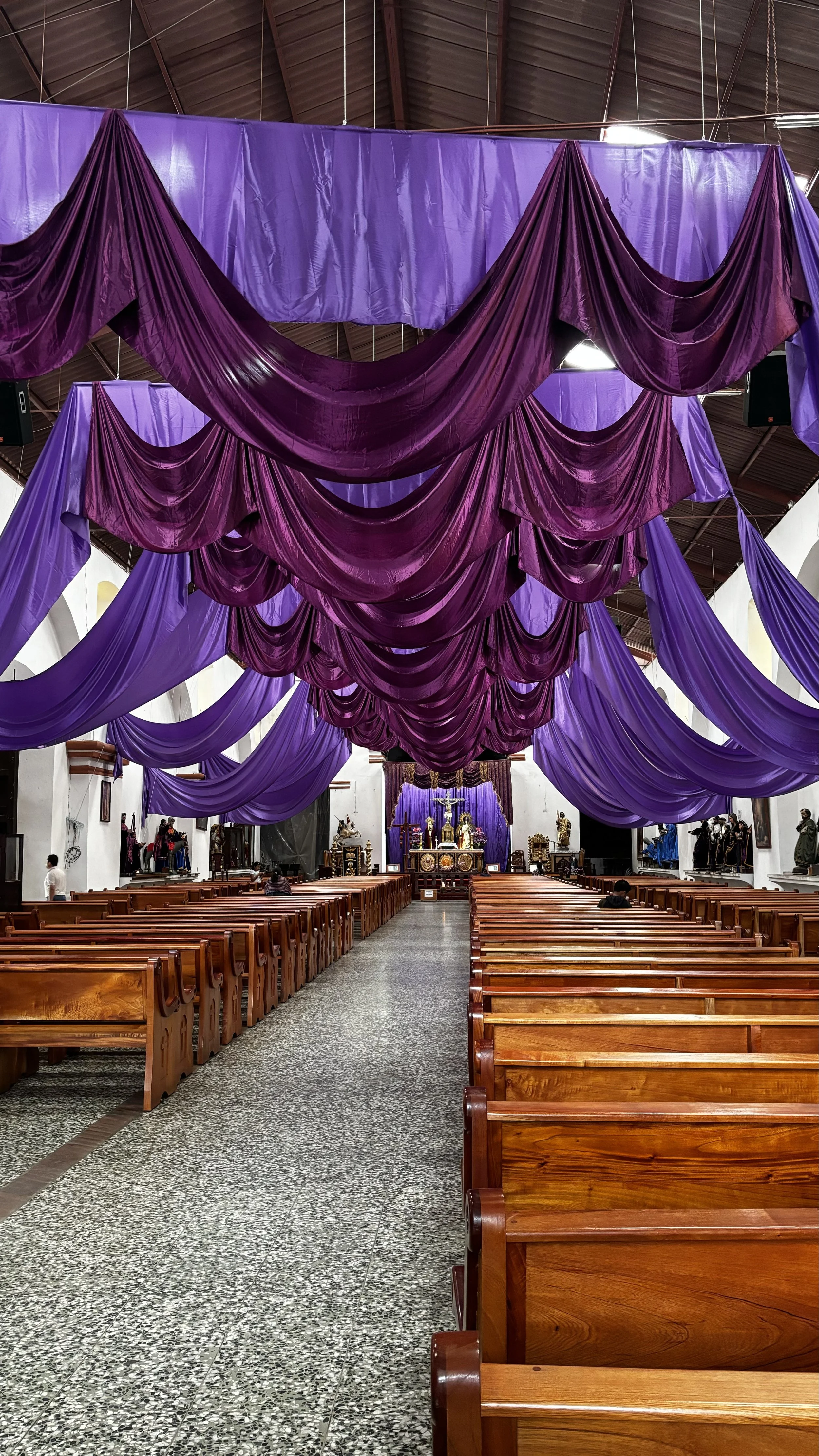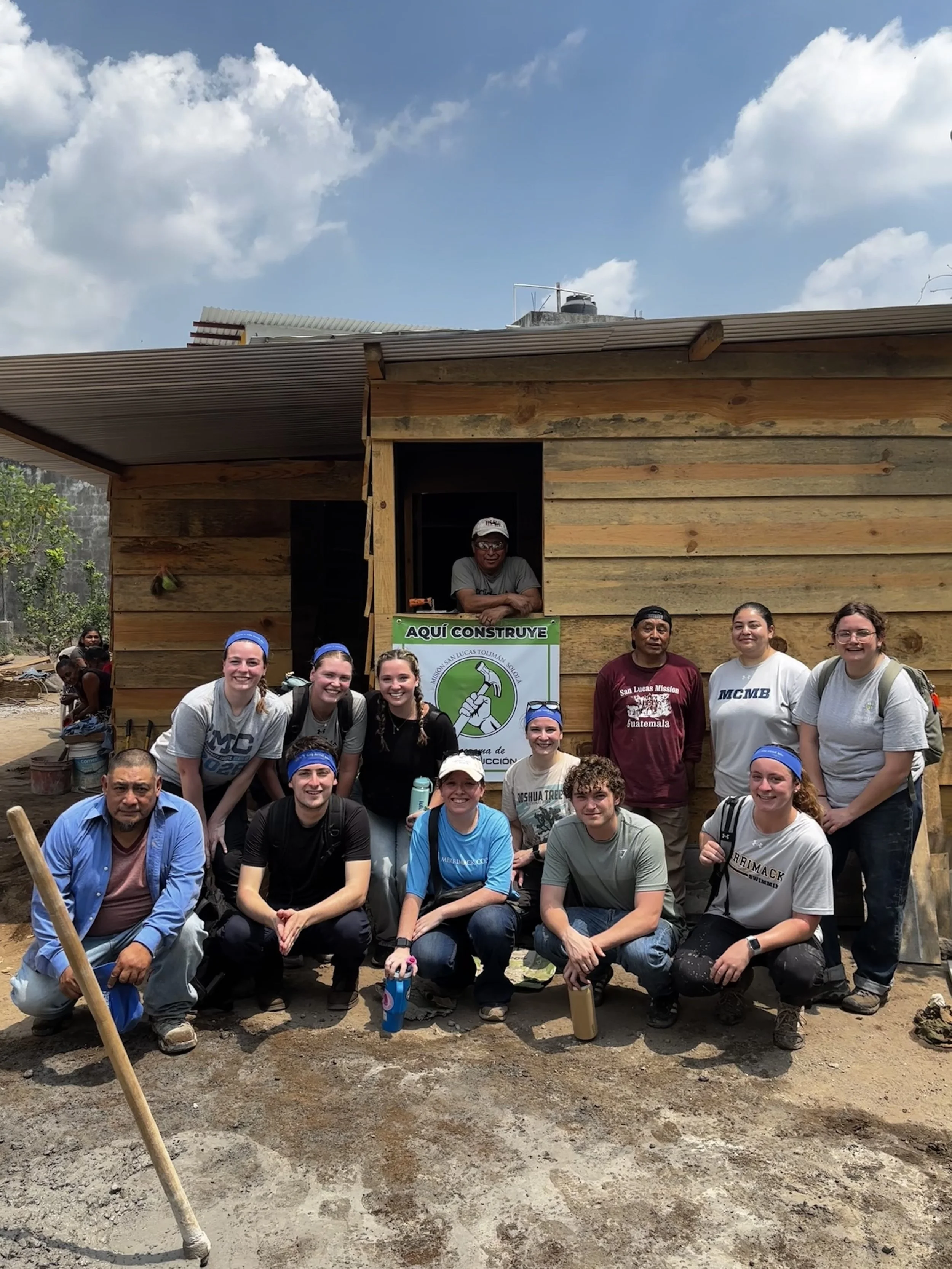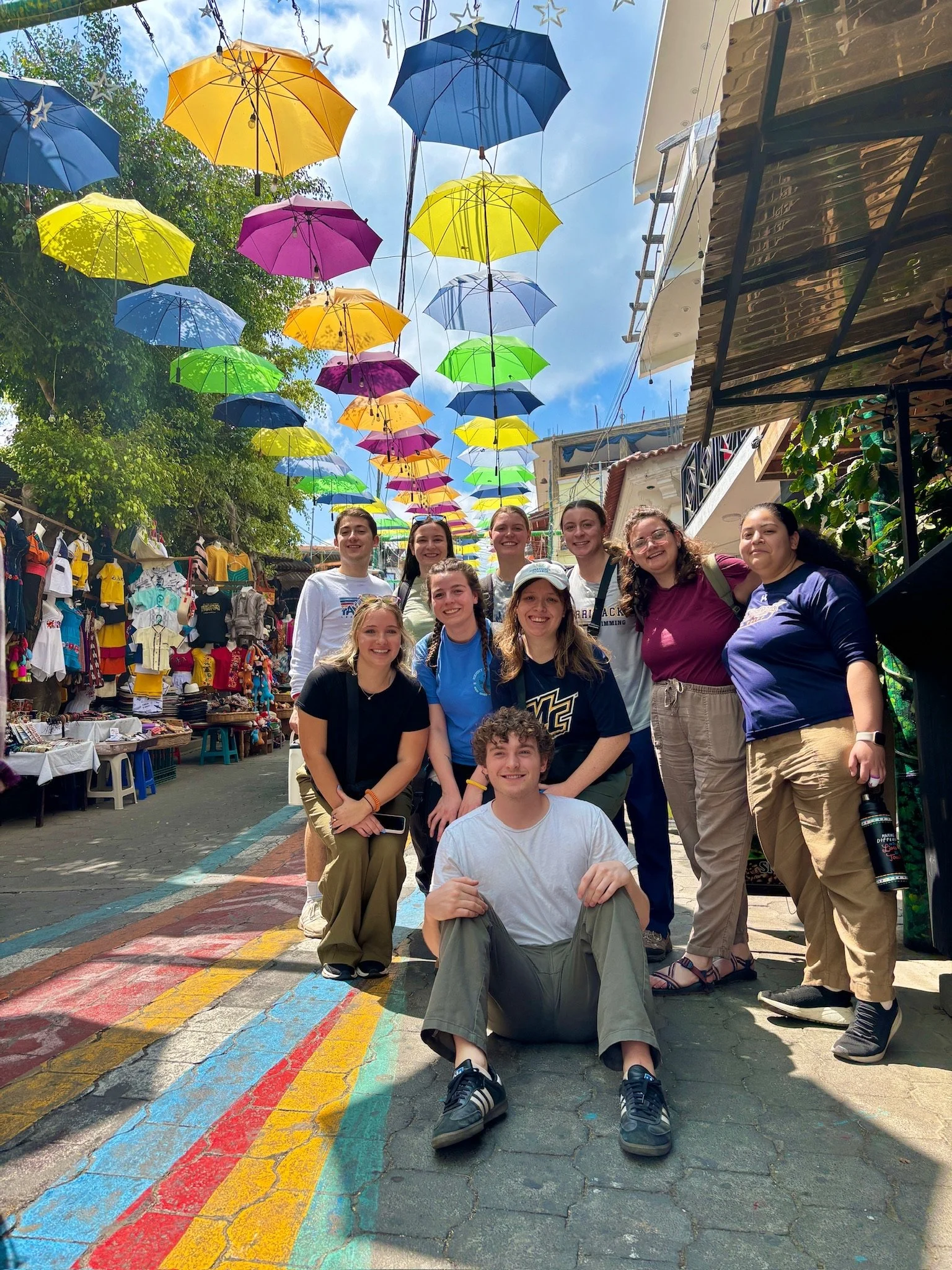Connections Beyond a Common Language
By: Sam Frey, NDMV Site Manager in Texas and Connecticut. She just returned from an incredible week in San Lucas Tolimán, Guatemala, and took some time to reflect on her experience:
As a graduate student at Merrimack College working towards my Master’s of Education in Community Engagement, I had the opportunity to serve as a graduate advisor for a SEND Trip. SEND Trips are alternative break service opportunities to various domestic and international communities. The program’s name comes from Isaiah 6:8, where the prophet Isaiah responds to God’s call by saying, “Here I am, send me.” With pillars of service, solidarity, community, and reflection, the SEND program provides an opportunity to undergraduates, graduate students, faculty, and staff to engage in service immersion experiences.
During spring break, I traveled to San Lucas Tolimán, Guatemala, a municipality on Lake Atitlán, with eight undergraduate students and a staff advisor. We were hosted by San Lucas Mission, a local organization supported by a Minnesota-based nonprofit called Friends of San Lucas. The mission runs seven different programs in the community, including Healthcare, Education, Coffee, Construction, Charity, the Women’s Center, and the Visitor Program. These programs are locally run by community residents as well as long-term volunteers who have committed to a year of service with the Mission.
The San Lucas Tolimán community welcomed us with open arms, expressing just as much gratitude towards us visiting as we showed to them for allowing us to learn about their home and the amazing work they do in their community. From the local merchants selling handmade goods to the children in the Mission’s school to the families we delivered food baskets to in their homes, each encounter we had was genuine and full of kindness.
Each of our days were broken into morning and afternoon sessions. To kick off the week, we went to a Construction Program site where they were building two houses for families experiencing homelessness. Despite our lack of construction experience and being strangers to the workers, they quickly found tasks for us to do and put their faith in us that we could accomplish what needed to be done. I now know how to plaster concrete onto a foundation and smooth it out for a clean finish! In the afternoon, we visited the women’s center, where we got to participate in a cooking class. The women taught us how to make dobladas, a handheld pastry similar to an empanada. From the compliments on my cilantro chopping skills and connections with the women teaching us to getting to eat the delicious dobladas at the end, visiting the women’s center was one of my favorite moments.
Each night after our meal and before group reflection, we walked down to the local park where we played basketball and soccer with local youth, sang karaoke, and always found a yummy sweet treat to try.
Despite many of us knowing little to no Spanish, we found unique ways to communicate, and these small interactions were some of the most meaningful.
In the middle of the week, we participated in what the mission calls “Charity Shopping.” On market day, when local vendors were lining the street, we helped purchase food and hygiene items to create baskets for local families in need who receive support from San Lucas Mission. Then we got to hand-deliver the baskets to the families, stopping at each home to hear their story.
The willingness of each family to welcome us into their homes and share their unique story during very challenging times was not taken for granted. We even heard some of the families speaking the native Mayan languages of Kaqchikel and Tz'utujil. Although the primary language of Guatemala is now Spanish, many Mayan dialects are still spoken throughout the country.
Every day was unique, with a new opportunity to learn about the local community both the challenges and the successes, including the impact of the Guatemalan Civil War and the extreme prevalence of Domestic Violence, but also the implementation of the Montessori method in the Mission’s school and the women who keep their culture alive though weaving the traditional garments and cooking the customary dishes.
Although many thank yous were expressed towards our group each day, what we received in knowledge, experience, and connection far outweighs that we were able to give in just one short week. San Lucas Tolimán is a place of vast beauty, rich culture, and hard-working people. I hope to one day return to San Lucas Mission, preferably with a more extensive Spanish vocabulary, and reconnect with the incredible community members.

